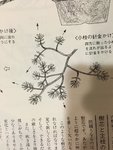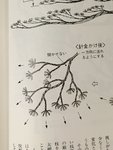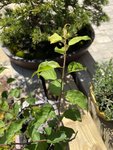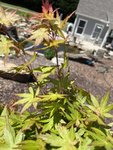I still don't quite understand what the "accepted" ramification structure is supposed to be on bonsai.
I've seen on various tutorials that pines should be grown so that the primary branch splits into two, those branches are split into two
and so on. The primary branch ends at the very first node. This idea is illustrated in the top picture.
I've also seen tutorials where a primary branch extends all the way to the end of a foliage pad and secondary branches
extend from the curves on the primary branch. This idea is illustrated in the bottom picture.
Horticulturally and aesthetically, are both of these branch structures correct? Is it species dependent?
I've seen on various tutorials that pines should be grown so that the primary branch splits into two, those branches are split into two
and so on. The primary branch ends at the very first node. This idea is illustrated in the top picture.
I've also seen tutorials where a primary branch extends all the way to the end of a foliage pad and secondary branches
extend from the curves on the primary branch. This idea is illustrated in the bottom picture.
Horticulturally and aesthetically, are both of these branch structures correct? Is it species dependent?







